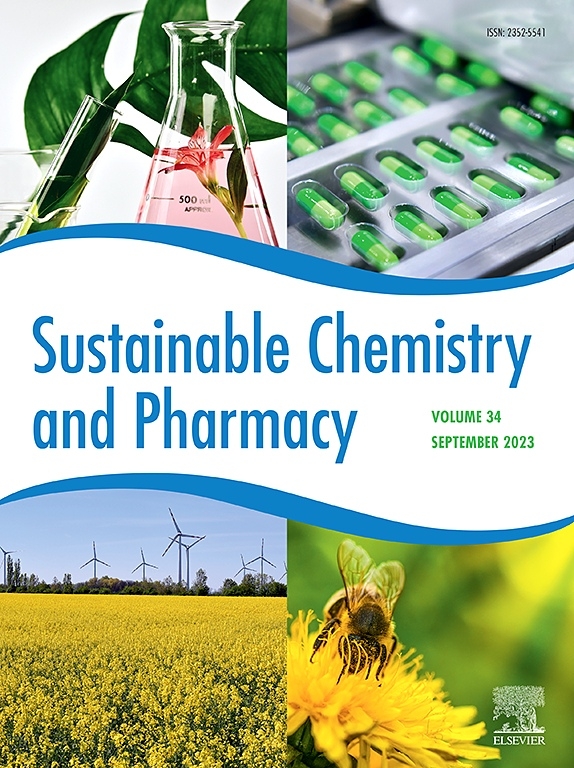Development of thermally efficient high volume fly ash-rubberized concrete using nano silica: A sustainable solution for energy-sensitive construction
IF 5.8
2区 化学
Q2 CHEMISTRY, MULTIDISCIPLINARY
引用次数: 0
Abstract
The construction industry faces increasing pressure to adopt sustainable materials that not only minimize environmental impact but also improve thermal efficiency in buildings and pavements. Conventional concrete, despite its structural strength, is thermally inefficient and contributes significantly to CO2 emissions. While previous studies have explored either high-volume fly ash (HVFA) or rubberized concrete independently, this study presents a novel integration of HVFA with crumb rubber (CR) and nano silica (NS) to achieve both environmental and thermal performance goals. Additionally, it incorporates computational fluid dynamics (CFD) simulation to evaluate heat transfer behavior—an approach not commonly employed in similar material systems. This study addresses these limitations by developing a High-Volume Fly Ash Rubberized Concrete (HVFA-RC) incorporating 50 % fly ash as partial cement replacement, crumb rubber (0–30 %) as fine aggregate substitute, and 2 % nano silica by weight of binder to improve early-age strength and microstructure. Five mix designs were tested for mechanical, durability, and thermal properties, and further analyzed using CFD-based simulations in ANSYS CFX. Results revealed that increasing CR content reduced compressive strength and increased porosity; however, the addition of NS mitigated these effects by densifying the matrix. The optimized mix (C30N3) exhibited the lowest thermal conductivity (0.87 W/m·K), reduced thermal expansion (6.17 × 10−6/°C), and minimal heat transfer coefficient (5 W/m2·K), indicating superior insulation performance. This research demonstrates the practical feasibility of producing multifunctional concrete from industrial by-products and nanomaterials. The proposed composite offers enhanced thermal resistance and sustainability, making it a promising candidate for energy-efficient and thermally sensitive construction applications.

利用纳米二氧化硅开发热效率高的大体积粉煤灰橡胶混凝土:能源敏感型建筑的可持续解决方案
建筑行业面临着越来越大的压力,需要采用可持续材料,不仅要最大限度地减少对环境的影响,还要提高建筑物和路面的热效率。传统的混凝土,尽管其结构强度,是热效率低下,并有助于显著二氧化碳排放。虽然以前的研究都是单独探索高容量粉煤灰(HVFA)或橡胶混凝土,但本研究提出了一种将HVFA与橡胶屑(CR)和纳米二氧化硅(NS)结合起来的新方法,以实现环境和热性能目标。此外,它还结合了计算流体动力学(CFD)模拟来评估传热行为,这是一种在类似材料系统中不常用的方法。本研究通过开发一种高容量粉煤灰橡胶混凝土(HVFA-RC)来解决这些局限性,该混凝土采用50%的粉煤灰作为部分水泥替代品,碎橡胶(0 - 30%)作为细骨料替代品,按重量计2%的纳米二氧化硅作为粘合剂,以提高早期强度和微观结构。测试了五种混合设计的机械性能、耐久性和热性能,并在ANSYS CFX中使用基于cfd的模拟进行了进一步分析。结果表明:CR含量的增加降低了材料的抗压强度,增加了孔隙率;然而,添加NS通过使基体致密化来减轻这些影响。优化后的混合物(C30N3)的导热系数最低(0.87 W/m·K),热膨胀率降低(6.17 × 10−6/°C),传热系数最小(5 W/m2·K),表明其具有较好的保温性能。本研究证明了利用工业副产品和纳米材料生产多功能混凝土的实际可行性。所提出的复合材料具有增强的耐热性和可持续性,使其成为节能和热敏建筑应用的有希望的候选者。
本文章由计算机程序翻译,如有差异,请以英文原文为准。
求助全文
约1分钟内获得全文
求助全文
来源期刊

Sustainable Chemistry and Pharmacy
Environmental Science-Pollution
CiteScore
8.20
自引率
6.70%
发文量
274
审稿时长
37 days
期刊介绍:
Sustainable Chemistry and Pharmacy publishes research that is related to chemistry, pharmacy and sustainability science in a forward oriented manner. It provides a unique forum for the publication of innovative research on the intersection and overlap of chemistry and pharmacy on the one hand and sustainability on the other hand. This includes contributions related to increasing sustainability of chemistry and pharmaceutical science and industries itself as well as their products in relation to the contribution of these to sustainability itself. As an interdisciplinary and transdisciplinary journal it addresses all sustainability related issues along the life cycle of chemical and pharmaceutical products form resource related topics until the end of life of products. This includes not only natural science based approaches and issues but also from humanities, social science and economics as far as they are dealing with sustainability related to chemistry and pharmacy. Sustainable Chemistry and Pharmacy aims at bridging between disciplines as well as developing and developed countries.
 求助内容:
求助内容: 应助结果提醒方式:
应助结果提醒方式:


